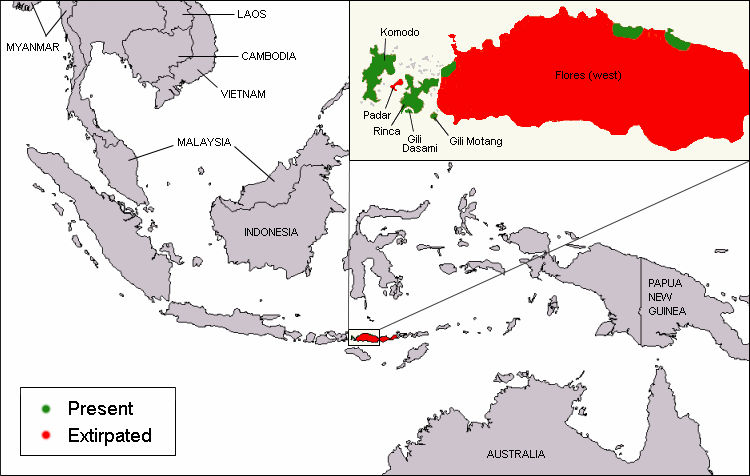The Komodo dragon (Varanus komodoensis), an apex predator native to the Indonesian islands, showcases a remarkable and unique reproductive strategy that sets it apart from other reptiles. Known for both traditional sexual reproduction and asexual reproduction through parthenogenesis, the Komodo dragon’s reproductive biology is a fascinating subject for evolutionary study and conservation efforts. This article delves into the intricate details of both reproductive methods, highlighting their evolutionary significance and implications for conservation.
Traditional Mating in Komodo Dragons: A Fierce Competition
During the mating season, which typically occurs between May and August, male Komodo dragons engage in intense battles to win the right to mate with a female. These ritualistic displays of dominance include biting, scratching, and wrestling. The victorious male then proceeds to mate with the female, transferring sperm to fertilize her eggs. This competitive process ensures that only the strongest and most genetically fit males reproduce, contributing to the overall health of the population.
Parthenogenesis in Komodo Dragons: The Process of Virgin Birth
Parthenogenesis in Komodo dragons is a fascinating form of asexual reproduction that allows females to produce offspring without male fertilization. During this process, a female's egg can develop into a viable embryo without being fertilized by sperm. This method is particularly beneficial when males are scarce. Notably, the offspring produced through parthenogenesis are typically male, due to the unique chromosomal makeup of the species.
The Genetic Process of Automixis
The genetic mechanism behind parthenogenesis in Komodo dragons is called automixis. In this process, the chromosomes within the egg duplicate and then recombine, leading to genetic variation among the offspring. Although the offspring are not exact clones of the mother, they inherit a unique combination of her genes. This mechanism ensures some degree of genetic diversity, which is crucial for the species' adaptability.
Evolutionary Significance of Parthenogenesis
Parthenogenesis represents a remarkable evolutionary adaptation in Komodo dragons. This reproductive strategy is advantageous in environments where male Komodo dragons are limited, allowing females to ensure the continuation of the species. It provides a means of rapid population growth and helps maintain genetic diversity, albeit limited, within the population. This adaptability enhances the species' resilience in the face of environmental changes.

Understanding the reproductive biology of Komodo dragons is essential for conservation efforts. The ability to reproduce both sexually and asexually gives the species a greater chance of survival amid threats such as habitat loss and climate change. Conservation strategies should focus on protecting the genetic diversity within Komodo dragon populations, ensuring their continued survival in their natural habitat.



















